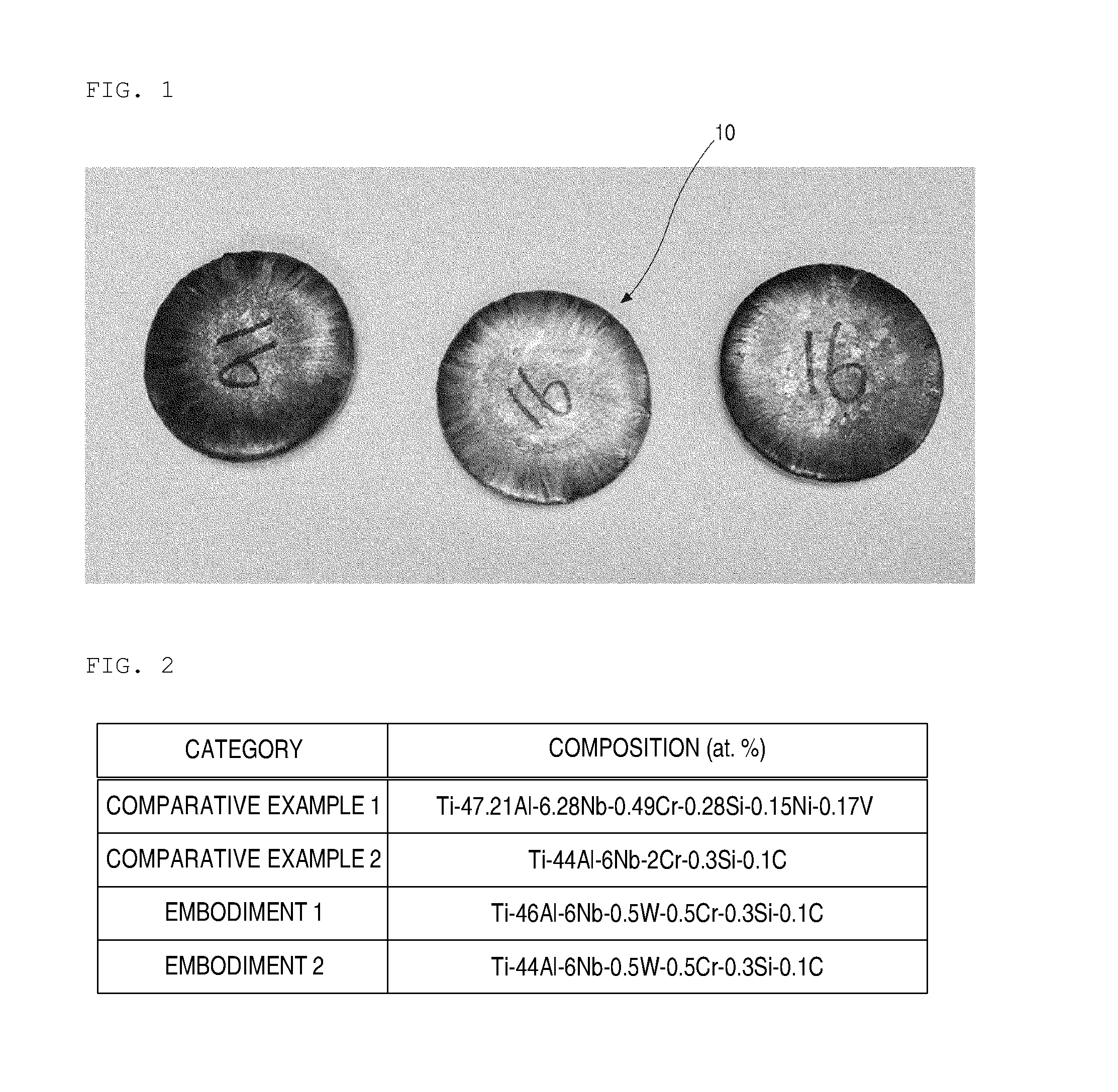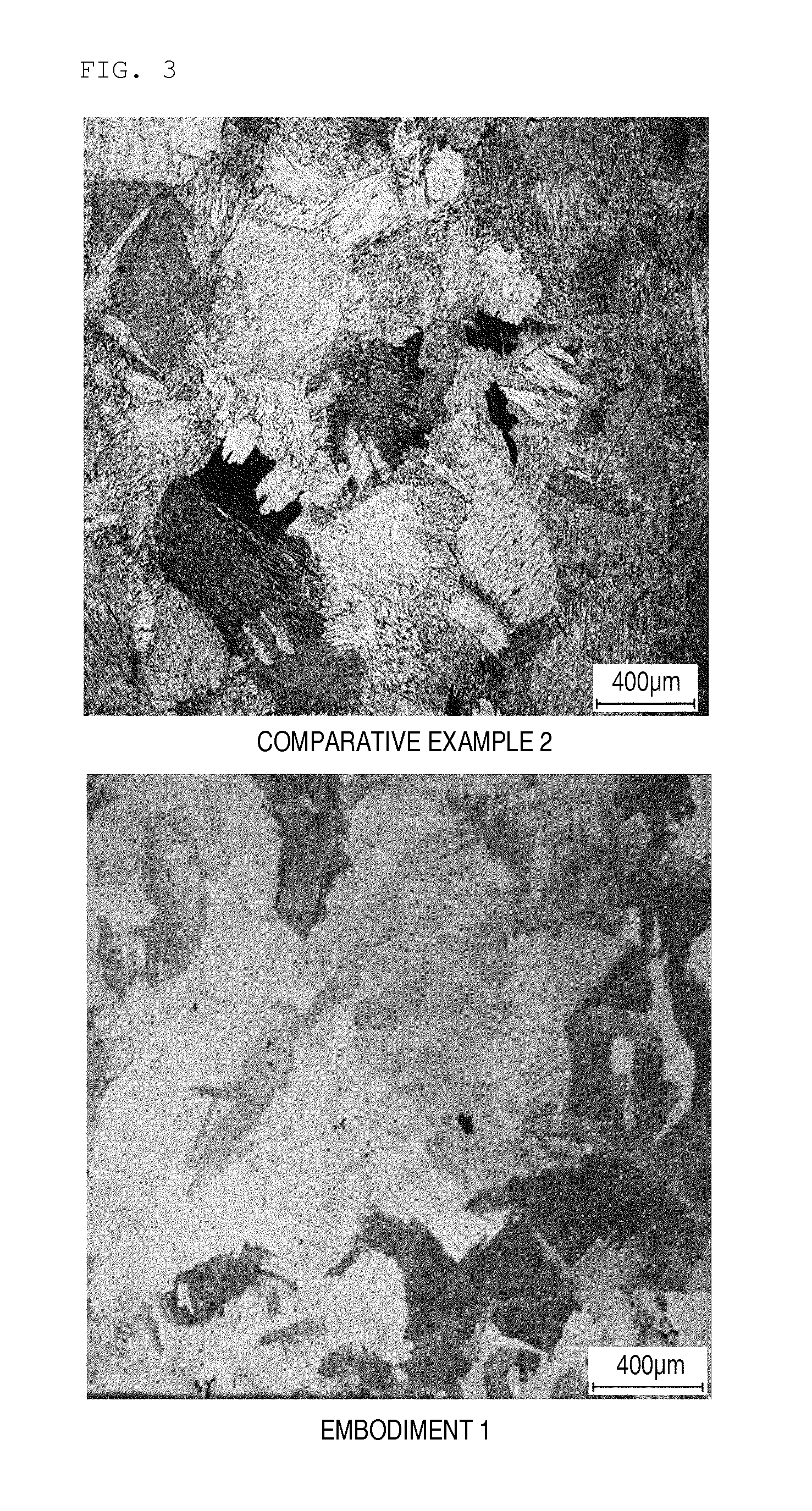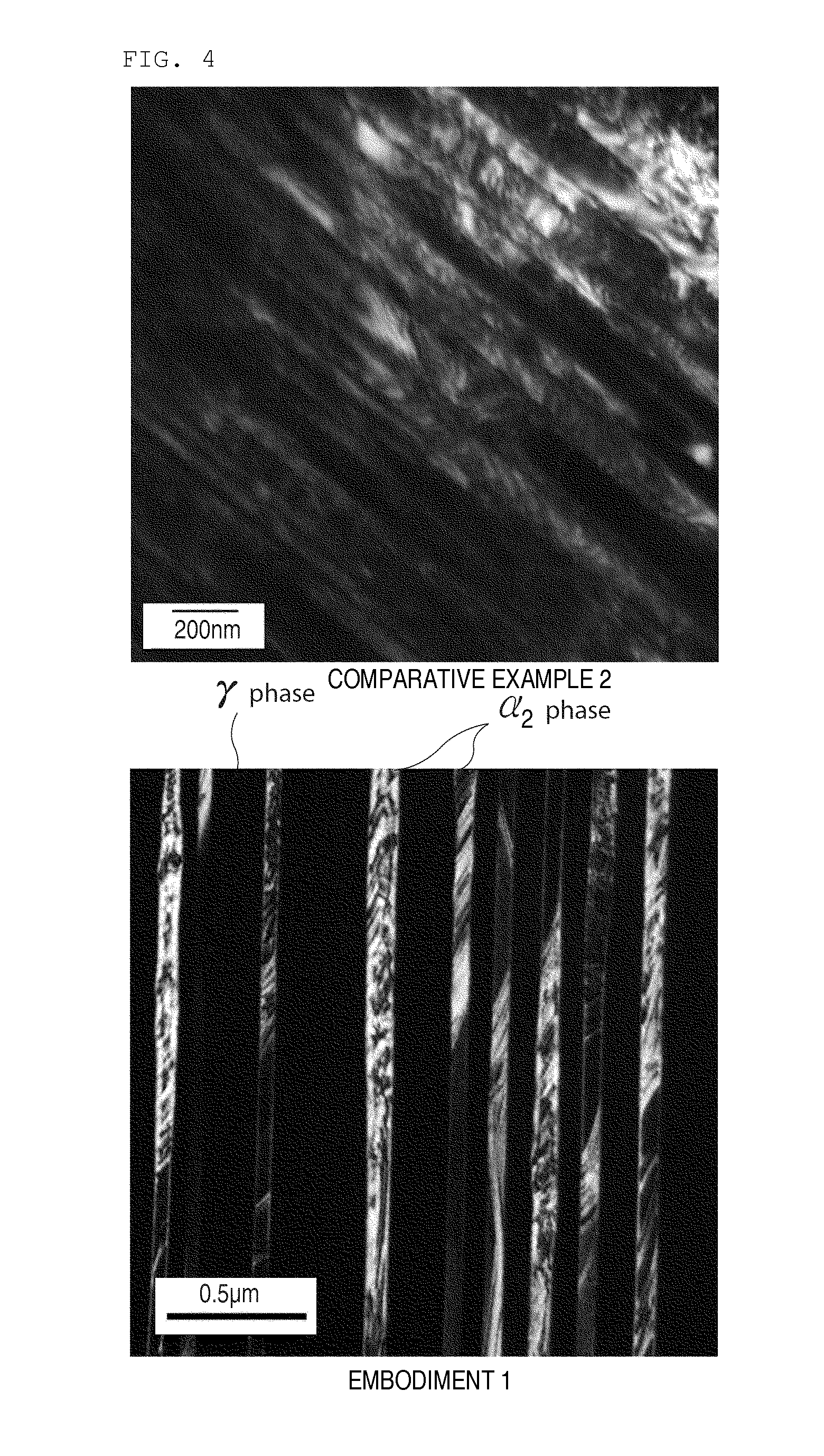Ti-Al-BASED ALLOY INGOT HAVING DUCTILITY AT ROOM TEMPERATURE
a technology of al-based alloys and ingots, which is applied in the field of ti — al-based alloy ingots having ductility at room temperature, can solve the problems of insufficient ductility, difficult to simply predict, and difficult for the tial to be used as casting materials, so as to improve high-temperature characteristics and room-temperature characteristics
- Summary
- Abstract
- Description
- Claims
- Application Information
AI Technical Summary
Benefits of technology
Problems solved by technology
Method used
Image
Examples
embodiment 2
[0048]Embodiments of the present disclosure are divided into Embodiment 1 and Embodiment 2 according to a difference in composition of aluminum (Al).
[0049]That is, the Ti—Al alloys according to Embodiments include 6 at % of niobium (Nb), 1.0 at % of softening-resistant improver, 1.0 at % of creep-property improver, and titanium (Ti) as a remainder, and have slightly different aluminum (Al) compositions of 44 at % and 46 at %, respectively.
[0050]At this time, the creep-property improver includes carbon (C) and silicon (Si), and the softening-resistant improver includes tungsten (W) and chrome (Cr). Further, the Ti—Al alloys according to Embodiments have a tensile strength of 640 MPa or more in a state where the subsequent process such as heat treatment is not performed.
[0051]Next, microstructures of the Ti—Al alloy according to Embodiment 1 of the present disclosure and the Ti—Al alloys according to Comparative Examples 1 and 2 are compared with reference to FIGS. 3 to 7.
[0052]FIG. 3...
embodiment 1
[0055]Furthermore, it can be seen that the Ti—Al alloy has a lamellar structure, a thickness ratio γ / α2 of the γ phase to the α2 phase is equal to or more than 2, and a thickness of the α2 phase is thinner than a thickness of the γ phase.
[0056]Namely, the α2 phase has a thickness of 100 nm or less, whereas the γ phase has a thickness of 100 nm to 200 nm. Thus, the α2 phase has a thickness relatively thinner than that of the γ phase, and the α2 phases and the γ phases are alternately arranged in a lamellar structure.
[0057]In contrast, as shown in FIG. 7, similarly to Comparative Example 2, in the Ti—Al alloy according to Comparative Example 1, the γ phases each having a thickness of 200 nm or more exist, and the α2 phases have thicknesses of 120 nm.
[0058]Moreover, as shown in the lowest photograph of FIG. 7, a plurality of β and γ crystal grains not having a layered structure are observed from the Ti—Al alloy according to Comparative Example 1.
[0059]FIG. 8 illustrates stress-strain ...
PUM
| Property | Measurement | Unit |
|---|---|---|
| thickness | aaaaa | aaaaa |
| thickness | aaaaa | aaaaa |
| tensile strength | aaaaa | aaaaa |
Abstract
Description
Claims
Application Information
 Login to View More
Login to View More - R&D
- Intellectual Property
- Life Sciences
- Materials
- Tech Scout
- Unparalleled Data Quality
- Higher Quality Content
- 60% Fewer Hallucinations
Browse by: Latest US Patents, China's latest patents, Technical Efficacy Thesaurus, Application Domain, Technology Topic, Popular Technical Reports.
© 2025 PatSnap. All rights reserved.Legal|Privacy policy|Modern Slavery Act Transparency Statement|Sitemap|About US| Contact US: help@patsnap.com



